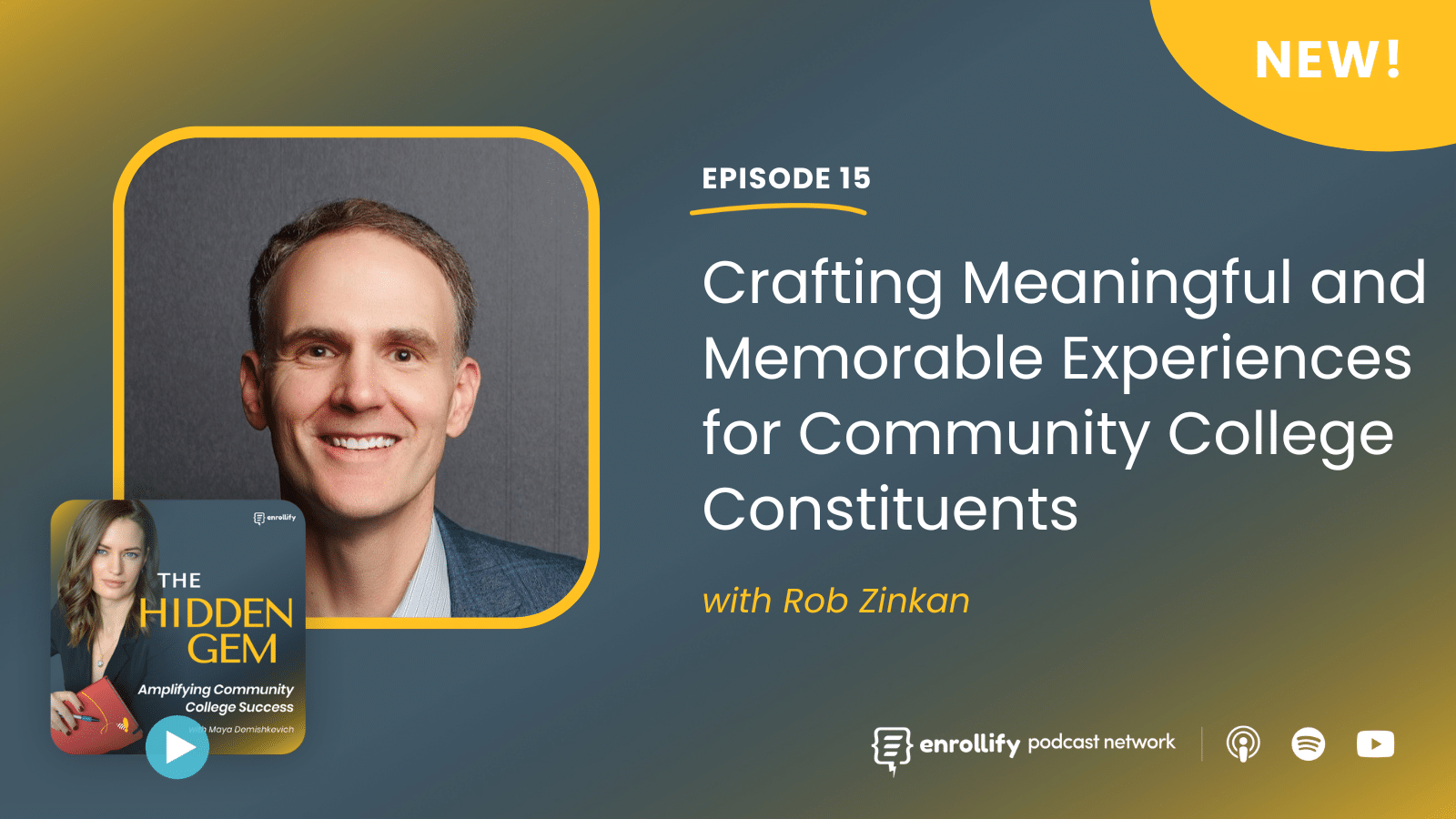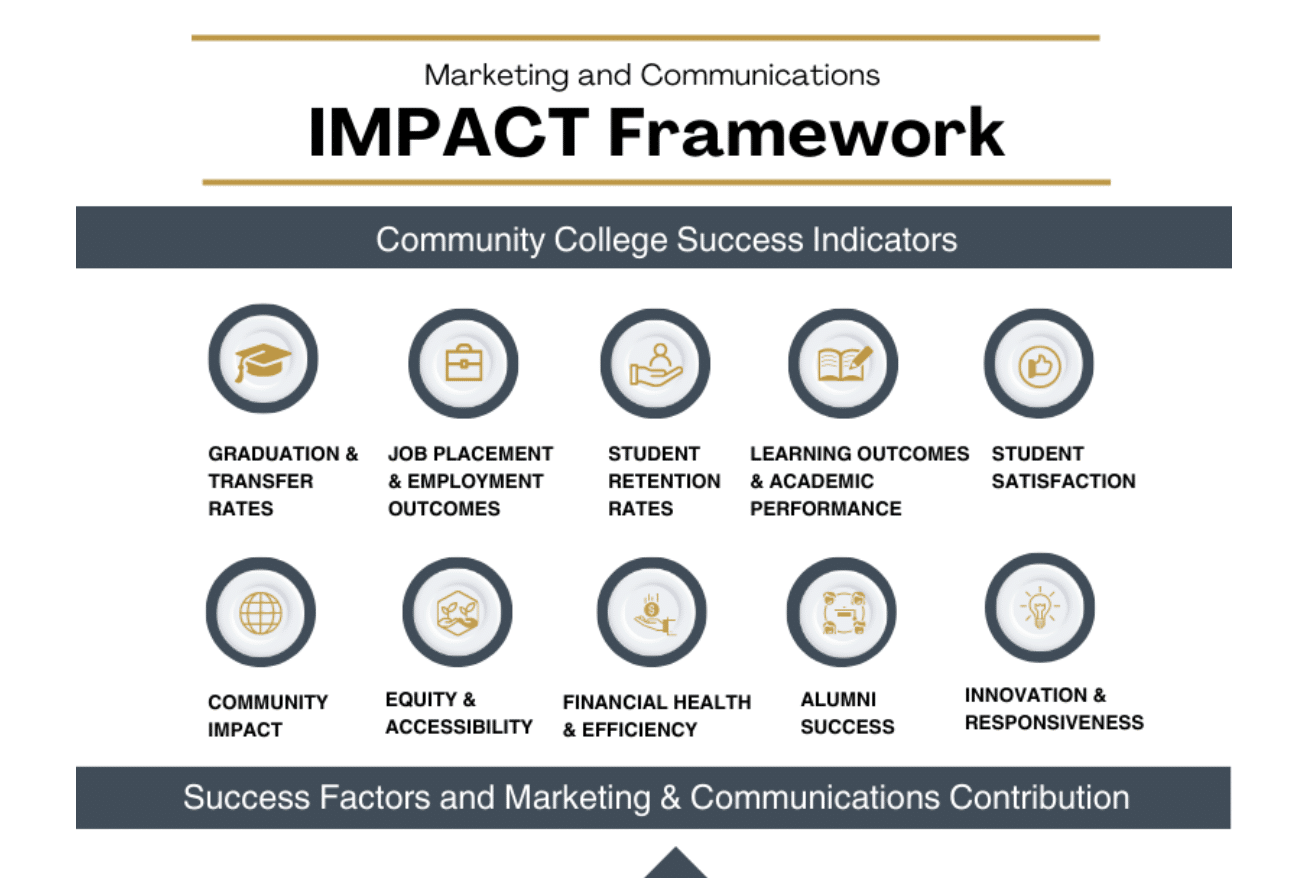Podcast Transcript: "Transforming Higher Education Marketing through Experience and Innovation" with Rob Zinkan
Maya (00:01):
Hi Rob, and welcome to The Hidden Gem Podcast! I’m so excited to have you here.
Rob (00:06):
Thanks, Maya. I’m looking forward to this conversation. It’s always great to connect and explore these topics.
Maya (00:27):
Let’s start with an introduction. Can you share your journey in higher education and how you came to your current role at RHB?
Rob (00:42):
Sure! I’m the Vice President for Marketing Leadership at RHB, a higher education consulting firm. I joined RHB five years ago to lead the institutional marketing practice after spending nearly 20 years at Indiana University. My roles there included vice chancellor, advancement, and marketing communications. At RHB, I focus on the "marketing you can’t see," like market positioning and organizational effectiveness.
Recently, RHB became a division of Strata Information Group (SIG), which broadens our technological reach, including tools like Slate and Salesforce to support higher education.
Maya (02:40):
Impressive background! I first came across your work through your guidebook, How to Structure Your Higher Ed Marketing Department for the Future. I found it invaluable for evaluating my team’s skill sets and identifying gaps. Can you briefly explain the four key areas of expertise every marketing communication department should develop?
Rob (04:10):
Of course! The guidebook introduces a framework we call "coherence," which focuses on aligning experience, expression, expectation, and effectiveness:
- Experience: Shaping the lived experiences of constituents, from prospective students to alumni. This includes digital experiences, which should be treated as intentionally as physical campus experiences.
- Expression: Communicating what’s true about your institution through visual and verbal messaging.
- Expectation: Understanding stakeholders’ perceptions and aligning them with institutional goals through insights and analytics.
- Effectiveness: Organizational capabilities like data, project, and talent management that support marketing’s impact on institutional outcomes.
This framework helps assess in-house and outsourced capabilities while focusing on alignment and consistency.
Maya (08:19):
That’s fascinating. I found "experience" to be a gap for us. We collaborate across departments but lack a dedicated person responsible for evaluating and enhancing the constituent journey. Why do you think focusing on experience is crucial for institutions?
Rob (09:59):
Great question! Constituent experiences shape brand perception. People associate your brand with how they feel about their interactions with you. Marketing needs to align everything—programs, operations, communications—with the institution’s chosen market position. The success of this alignment is seen over time in how people identify with your brand.
Maya (12:45):
That’s so true. Institutions often say one thing but do another, creating misalignment. Can you share examples of how institutions have successfully enhanced engagement through experience design?
Rob (13:51):
Sure! At Agnes Scott College, we helped design Summit, a signature experience woven into all four years. It combines coursework and co-curricular activities centered on leadership development and global learning.
One standout feature is their admissions packet, which includes gloves for ringing a ceremonial bell upon achieving milestones like graduate school acceptance or a first job offer. This connects students’ initial experience with outcomes, making it tangible and inspiring from the start.
Maya (18:14):
That’s a fantastic example. It’s unique to the institution and ties together every stage of the student journey. Let’s talk about creating impactful experiences at community colleges. Where should institutions begin?
Rob (26:58):
Start with an experience inventory—catalog key touchpoints for your top audiences. Assess each for quality, differentiation, and alignment with your mission and brand.
Next, consider journey mapping to identify barriers, opportunities, and emotional touchpoints. And don’t forget to engage directly with students—spending even an hour a week with them can reveal valuable insights.
Maya (30:10):
I love those suggestions. You also mentioned a tool called reverse focus groups. Can you explain how they work?
Rob (30:25):
Absolutely. Reverse focus groups put students at the center as experts of their own experiences. They share what’s been impactful and introduce others—faculty, staff, or peers—who influenced their journey. This method uncovers patterns and unique elements that may not surface through traditional focus groups.
Maya (35:26):
That’s so insightful. It reminds me of how traditions often emerge naturally at institutions. For instance, we started using chalk art to introduce our Take Shape campaign. It’s simple and cost-effective but delights students and creates memorable moments.
Rob (35:34):
That’s a great example! Over time, these small touches can become expected traditions that enhance the student experience and reinforce your brand.
Maya (43:16):
As we look ahead, what trends do you foresee in higher education marketing, particularly around experience design?
Rob (43:37):
Digital transformation will continue to be central. Institutions must balance technology’s role in scaling experiences with the need for meaningful human interactions. Additionally, as lifelong learning becomes the norm, we must think holistically about the integrated journeys of diverse audiences, from online learners to community members.
Maya (46:56):
That’s a great perspective. Thank you for sharing so much insight, Rob. I’ve learned a lot and look forward to brainstorming more ways to enhance experiences at my institution.
Rob (47:23):
Thank you, Maya! It’s been a pleasure. Let’s connect again soon—maybe even swap hiking stories from West Virginia!
Maya (47:40):
Absolutely! Thanks again, Rob.


